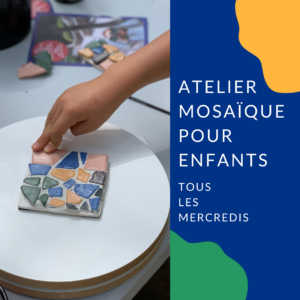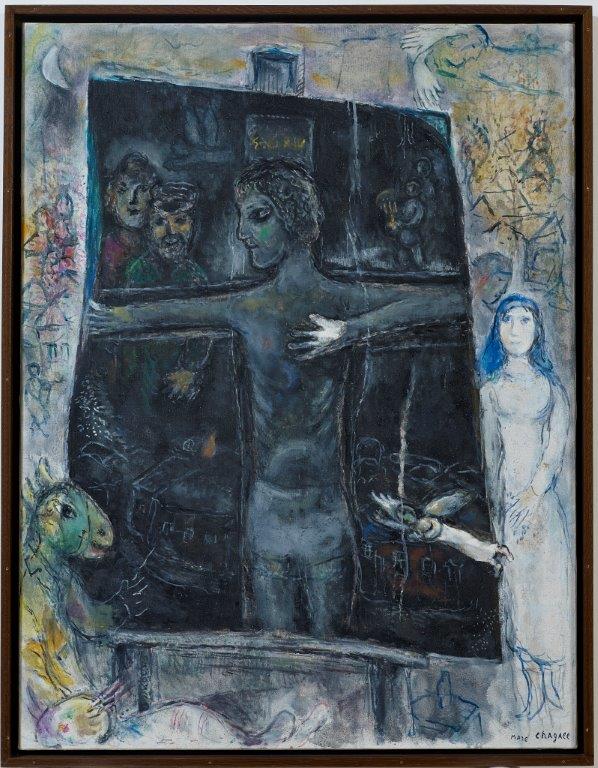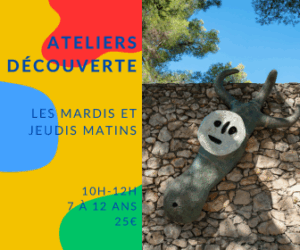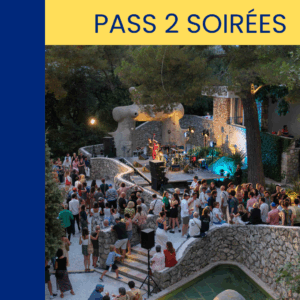
Devant le tableau
This painting is a major work of Chagall’s “late” period, and surprises through the modernity of its composition and by the powerful use of black. An artist with a donkey’s head, on the left, is painting a painting in which the crucified person is none other than himself. This donkey-painter presents this strange crucifixion to us with a Russian village in the background, a painting in the painting (placed on an easel), which creates a curious space, the Russian village being repeated in the light backgrounds. Devant le tableau is a double self-portrait that plays with iconographic codes of the self-portrait and image of the painter at work. The frontal composition puts the spectator facing the painting, a black screen that comes away from a background shrouded in greyness, where the outlines of the Vitebsk isbas appear as shades. The black rectangle, which accentuates the dramatic intensity of the Crucifixion, takes part in constructing a timeless space, with a treatment that recalls the works of American artists, such as Barnett Newman, that Chagall discovered in New York in the 1940s.
Marc Chagall (1887-1985)
Aimé Maeght met Marc Chagall for the first time in October 1947, at the preview of his retrospective at the Musée d’Art Moderne de la Ville de Paris, organised by Jean Cassou as if to provoke and celebrate the painter’s return after his years of exile in the United States.
“Ida Chagall took me to visit her father and I was dazzled to discover, in his atelier, the gouaches painted in the USA and Mexico: sixty superb pictures, which I was lucky enough to take back with me to rue de Téhéran. Together, we drew up the plans for the first exhibition at the gallery. That meeting marked the beginning of a close and trusting collaboration, and an unwavering friendship,” Maeght explained. The exhibition took place in March 1950. That same year, Chagall moved to Vence, near Saint-Paul-de-Vence.



